Garter (in Gold, fabric)
CATEGORY: Version
SKU: 01.GBR.0101.106.01.000
Estimated market value:
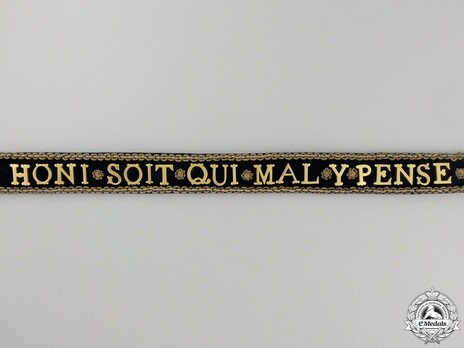
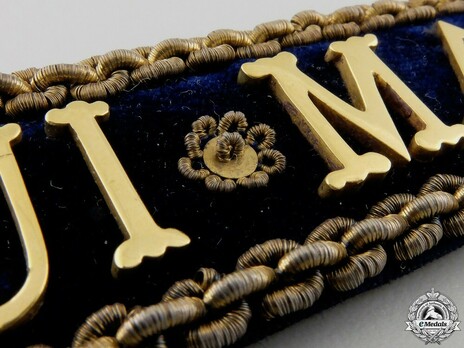
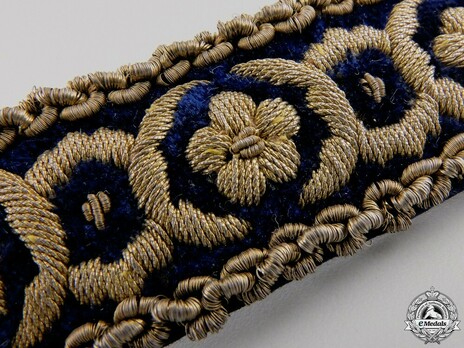
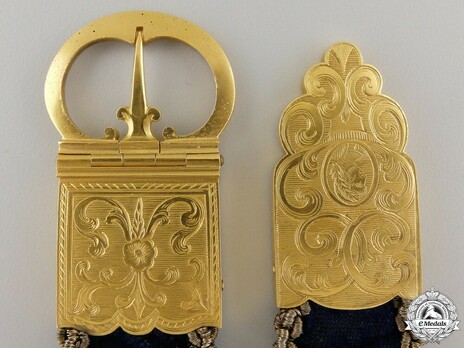
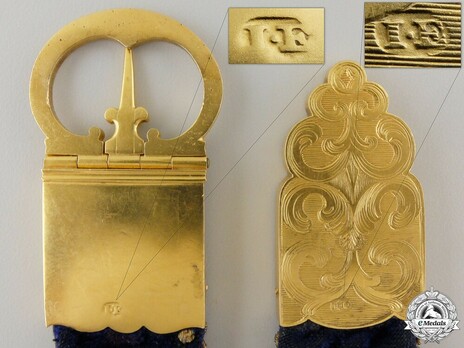
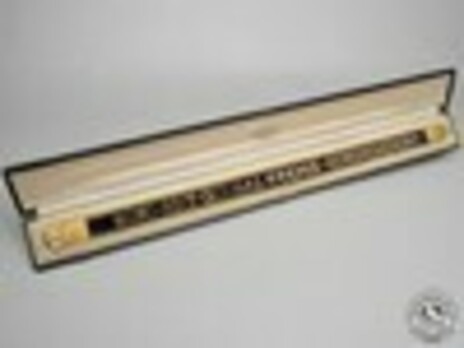
Estimated market value:
A Most Noble Order of the Garter in Gold by Garrard & Co. - The motto "Honi Soit Qui Mal Y Pense" in 18 Gold, mounted on a dark blue velvet coarse, both ends of the Garter including buckle in finely engraved solid Gold (both marked "IE"), borders, stops between words and ornamental scroll in embroidered gilded wire, total length approximately 58 cm (22 1/2"), of very fine quality manufacture, contained in fitted, "Garrard & Co. Ltd.", London, leatherette case, with top embossed in golden letters "GARTER". Footnote: from the Estate-Collection of the Grand Duke of Baden. The case itself dates from around 1912-15, although the Garter itself appears of older manufacture, likely mid to late 19th Century. Very attractive and very rare.
The Most Noble Order of the Garter is the oldest order to have a continuous existence. Its medieval foundations are shrouded in mystery, and a number of legends have formed surrounding its establishment, form, and motto. Scholars and historians have yet to come to a consensus regarding its origins but agree that it has existed since at least 1348. Today, the Sovereign is the head of the Order.
The most popular legend of the Order’s birth tells the story of Countess Salisbury and King Edward III. The legend tells that while the Countess was dancing at a ball in Calais, her garter slipped from her leg and fell to the floor. The King retrieved the garter and secured it around his own leg, proclaiming to the sneering courtiers, “Honi soit qui mal y pense” (translated from Middle French to “Shame to him who thinks evil of it”). It is now believed that the legend in this form only dates to the sixteenth century. Other scholars believe that the unusual decoration of the garter represents a strap used to secure armour and that the motto refers to Edward III’s claim to the throne of France.
Since the first conferral of the Order in 1348, membership has been limited to 24 Companions and the Sovereign. For most of its existence, it has been conferred upon members of the nobility, but beginning in the twentieth century, commoners have been admitted regularly. Although women were permitted to wear the ceremonial dress as early as the medieval era, women were not admitted as full members until 1987. Prior to this date, Queen Consorts of the twentieth century, as well as female members of foreign courts, were only received as honorary members. Today, members of the British Royal Family and foreign monarchs are not included in the statutory membership limitations. Knights Companion can use the formal title “Sir” and Ladies Companion can use the formal title “Lady” if no higher title is already held. All Companions are entitled to use the post-nominal letters KG.
The Order was originally conferred in recognition of loyalty and military merit, although it later became an important tool in securing foreign alliances. Between 1714 and 1946, all nominations to the Order were made on the recommendation of the British government, but the Order is now conferred as a personal gift of the Sovereign.
The motto of the Order is “HONI SOIT QUI MAL Y PENSE,” Middle French for “Shame to him who thinks evil of it.”
All insignia of the Order must be returned to the Central Chancery of the Orders of Knighthood upon the death of the recipient unless the Sovereign has granted special permission to the relatives of the deceased to keep one or more of the decorations.
The Garter is meant to the worn by Lady Companions around the left arm above the elbow and by Knight Companions around the left leg below the knee. In practice, however, the Garter is hardly ever worn.
There are multiple versions of the Garter that may differ by composition, manufacturer, and size.

Comments
Sign in to comment and reply.


Scroll Top